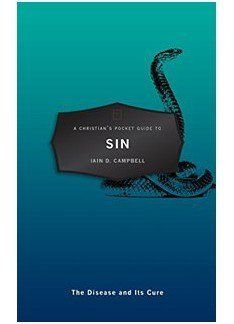In 1949 there had been, at most, one million Protestant believers in China. Fifty years later, in 1999, there were estimated to be around 90 million. This was mainly due to the phenomenal growth of illegal, ‘underground’ house churches that, by then, numbered 80 million.
It was the result of one of the mightiest outpourings of the Holy Spirit in the whole history of the church. The revival continues to this day.
The deaths of Zhou Enlai and Mao Zedong in 1976 brought to an end the Cultural Revolution and Maoist thought. In multitudes disillusionment had set in; harsh reality and bitter experience had overtaken and destroyed idealism. It was a time of opportunity for the gospel.
Officially, the church was dead and all religion strictly illegal. Yet there was a revival already in evidence in the ‘underground’ house church movement. This spread rapidly and accelerated even more after the notorious massacre of students in Tiananmen Square in June 1989.
‘Open-door’ policy
Deng Xiaoping (1904-1997), who had been ‘purged’ during the Cultural Revolution, re-emerged as leader of the moderate pragmatists.
By 1978 he was the de-facto leader of China, and remained so until his death.
From 1986, China’s ‘open-door’ policy led to inward foreign investment, with technical knowledge. This encouraged some development of a market economy and private sector. It was to be ‘socialism with Chinese characteristics’.
In 1989 stock markets opened in Shanghai and Shenzhen. The economy continued to grow at an impressive rate. In 1997 Hong Kong reverted to Chinese control, as also did Macau in 1999.
The more liberal policies of Deng Xiaoping undid Mao’s extremist policies, including those of outright persecution of believers. However, in January 1979, the Religious Affairs Bureau resumed its work of government control of all religion.
The official Three Self Patriotic Movement was reconstituted in March 1980 and the China Christian Council (CCC) became a recognised religious body in October 1980. The leadership of both the TSPM and the CCC was entrusted to the liberal theologian and communist Bishop Ding Guangxun.
The leadership of the CCC remained firmly in the hands of convinced Communists who vigorously opposed the expansion of Christianity in China. They opened as few TSPM churches as they could get away with. The CCC in due course took its seat as a member of the World Council of Churches.
The fundamental dilemma for both the state and TSPM was that, for ideological reasons, they could not tolerate what they could not control. The house churches, who remained unregistered on principle, were regarded as illegal and a sect that must be suppressed.

Itinerant evangelists
In the latter years of the Cultural Revolution and early post-Mao years of 1974-1982, China saw the rise of itinerant evangelists. The year 1981 was a turning point for the house-church Fangcheng fellowship. ‘This was when the church moved from beingunderground to open meetings in full view of the police’.
The emerging house church networks had developed a pattern of evangelism. They would train young Christians and send them out in pairs. These were told to evangelise everyone; they were not to pass anyone on the street or in their journey without sharing the gospel. Tracts were given out in public places.
The police were very surprised to see these bold, dedicated young men and women. It was something new. Inevitably these young evangelists were arrested, beaten, jailed and tortured. This did not dampen their zeal.
Between 1978 and 1980 thousands of Christians who had been arrested in the 1950s were released and allowed back into secular occupation.
These were those who had opposed the TSPM or been caught up in the 1957-1958 Anti-Rightist Campaign. It can hardly be over-emphasised what good the testimony and example of these thousands of released Christian sufferers had on the emerging house church movement.
Many of these Christians were older pastors and leaders, and had been well trained in theology before 1949. They were ready and willing to take teaching and leadership roles among the growing community of young believers and itinerant evangelists.
‘A mass of believers’
In 1980, the Chinese press grudgingly admitted that there was ‘a mass of believers’ in China. They recognised an unprecedented upsurge of Christian belief in China, especially among the youth. Not a few Communist Party members had been affected.
In Zhejiang province, the remarkable revival in Wenzhou continued unabated. In one mountainous region of 10,000, one in three were Christians, and were meeting in 15 places. The services lasted four hours.
In some communes the majority of the members were Christian. In one commune production teams were named, ‘Jesus team number 1’, ‘Jesus team number 2’, and so on. Leslie Lyall noted that, ‘In some rural areas, over 90 per cent of the population are Christian — a totally unprecedented statistic in the history of the Church in China …. One semi-official estimate is that in Zhejiang alone there may be as many as five million Christians’.
In Jiangsu province it was the same story. Shanghai had one million believers. Four thousand house groups held special Christmas services in 1982. This was in addition to those held in the open churches.
In Nanjing, Suzhou and elsewhere there was rapid growth. An old pastor said, ‘The fire of the gospel has been lit and it is going to keep on burning like a prairie fire’.
In Guangdong province, in a small town
near Guangzhou, a church of 100 members actually baptised 300 — three times its own membership! In Shantou, where the church had suffered severely in 1966, the membership had nearly doubled — most of the additions were young people. Two hundred students met regularly for Bible study at one university.
What about inland? It was discovered, almost by accident, that the revival was not confined to the coast. In Henan province, made up of mostly farmers, it emerged that astounding numbers were turning to Christ. Said one pastor, ‘It is God who is mightily at work today! We are doing nothing’.
Godliness
What was so impressive was the godliness and Bible knowledge of the young Christians, in spite of all the handicaps of lack of Bibles and good Christian literature. Three thousand baptisms every day of the year had been taking place in Henan province! Just think of Robert Morrison and his colleagues with their ten converts over 27 years, at the time of the beginnings of the gospel in China.
Likewise, revival was reported in the six provinces bordering on Henan. These were Anhui, Hubei, Shaanxi, Shanxi, Hebei and the northern coastal province of Shandong. Growth in Jiangxi was said to be ‘astounding’ and in Shandong ‘tremendous’.
In the martyr province of Shanxi, so bruised by the Boxers in 1900, the number of recent conversions were ‘innumerable’. In contrast, in Beijing there were very few Christians.
The vast majority of these converts remained outside the TSPM. But the house churches boomed. In 1983 and 1984 there were major crackdowns on the house churches. These crackdowns started in Henan and Anhui provinces and spread nationwide.
This was as a result of a nationwide ‘anti-spiritual pollution’ campaign. These persecutions continued until mid-1984. Many house church Christians were arrested, fined and given long-term prison sentences; some were even executed by the authorities.
After the Tiananmen Square massacre, urban churches noticed a new development: thousands of students previously uninterested in religion were coming to church or openly wanting to discuss the Christian faith. This added a new dimension to the revival.
Intelligentsia
The gospel was now reaching the new intelligentsia — the university students — a phenomenon last seen in the revival that occurred during and after World War II.
Reaching the intelligentsia with the gospel can be seen as a step forward in the maturing of the revival church in China and progress in its reach into all levels of society. Behind the staggering increase in numbers enquiring and joining both the official and house churches was a hunger for Bibles and Bible teaching.
The Protestant church in China today is almost completely evangelical. Personal repentance toward God and trust in Jesus as Lord and Saviour is the normal experience for professing believers. They also have ‘to count the cost’ of discipleship.

The author’s recently published book is The power to save — a history of the gospel in China, EP Books,
320 pages, £9.99;
ISBN: 9780852347430















